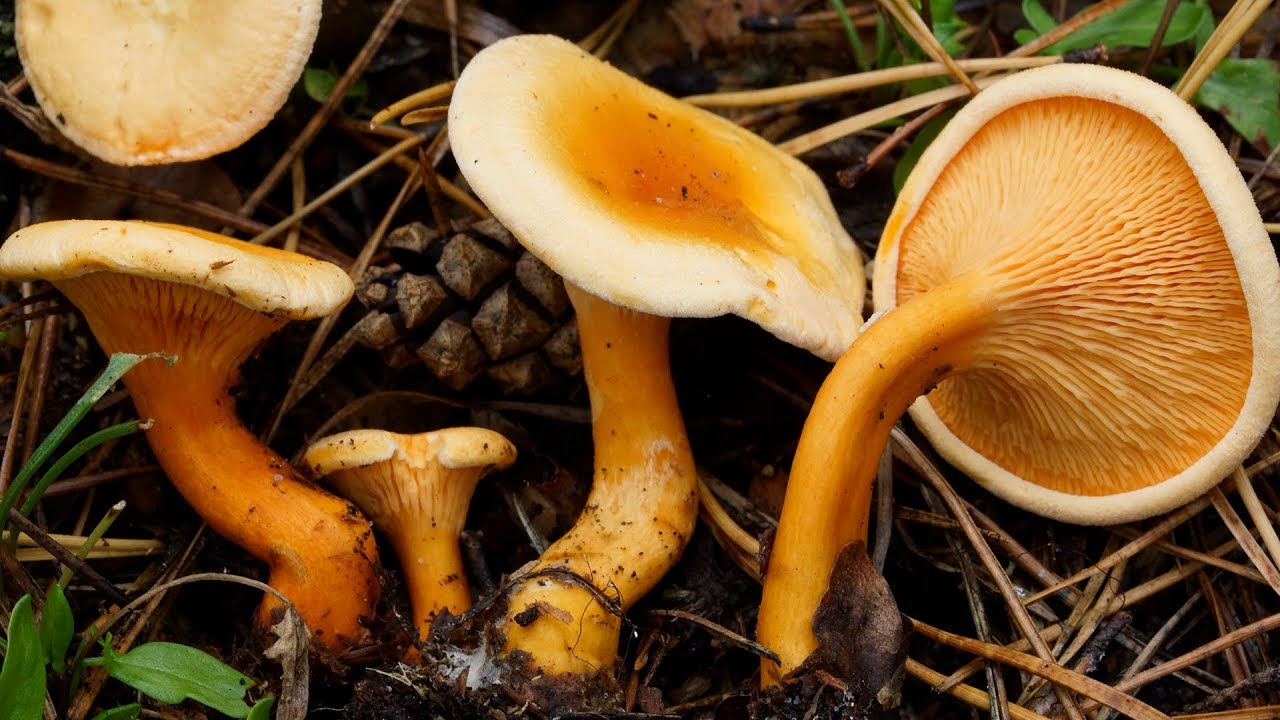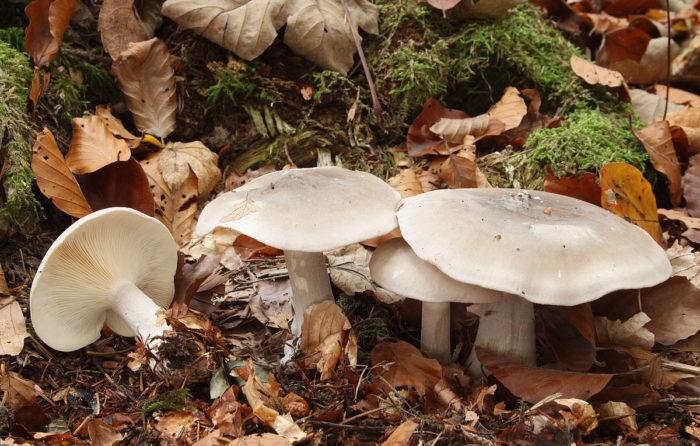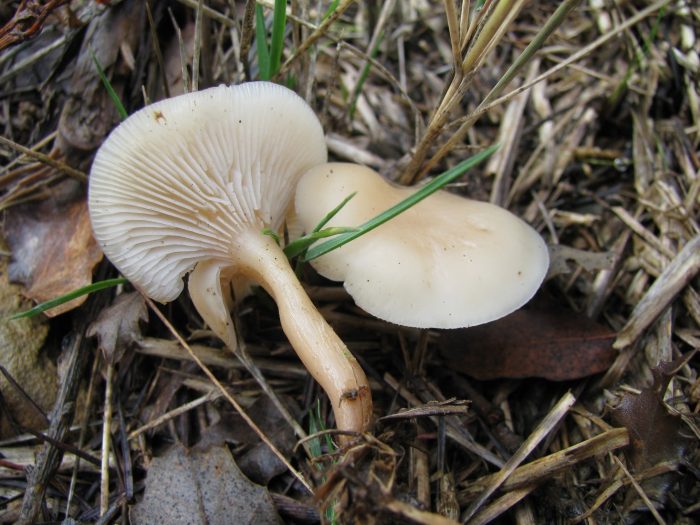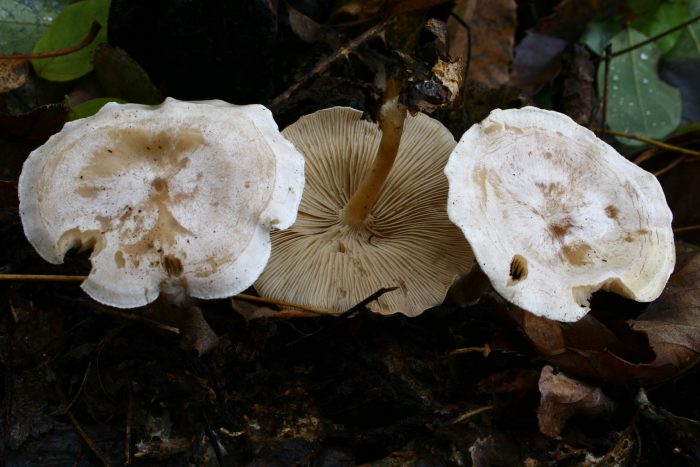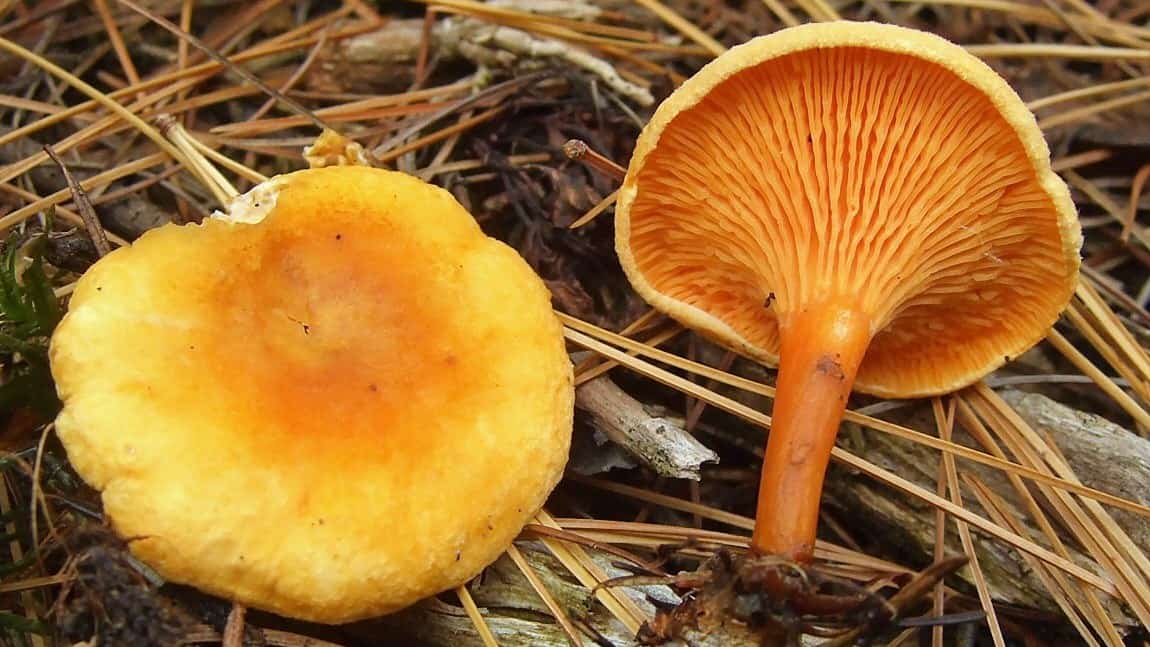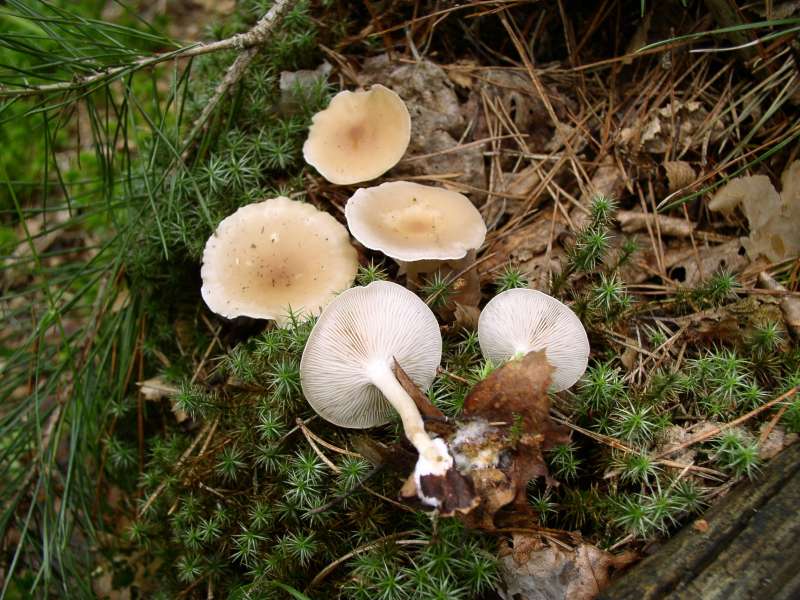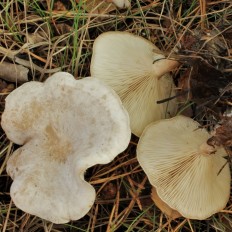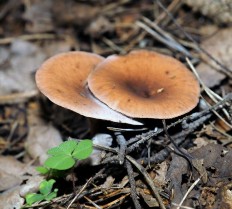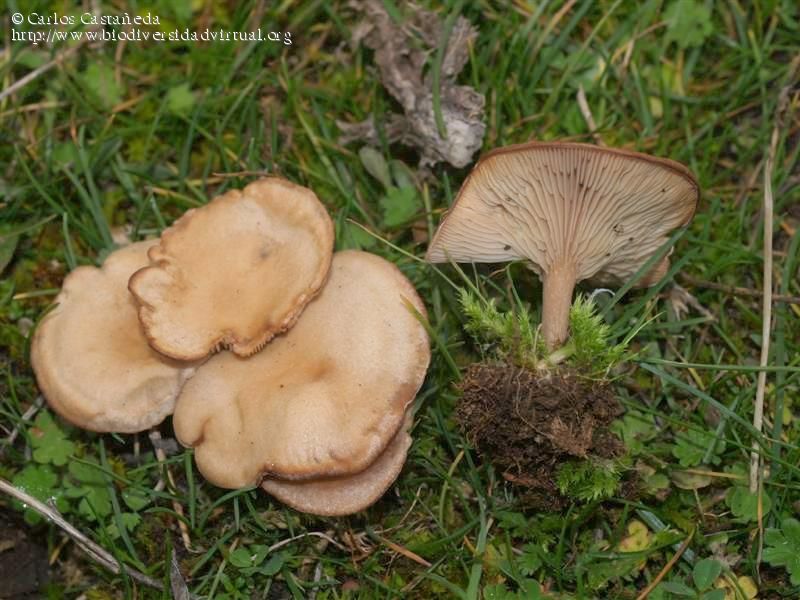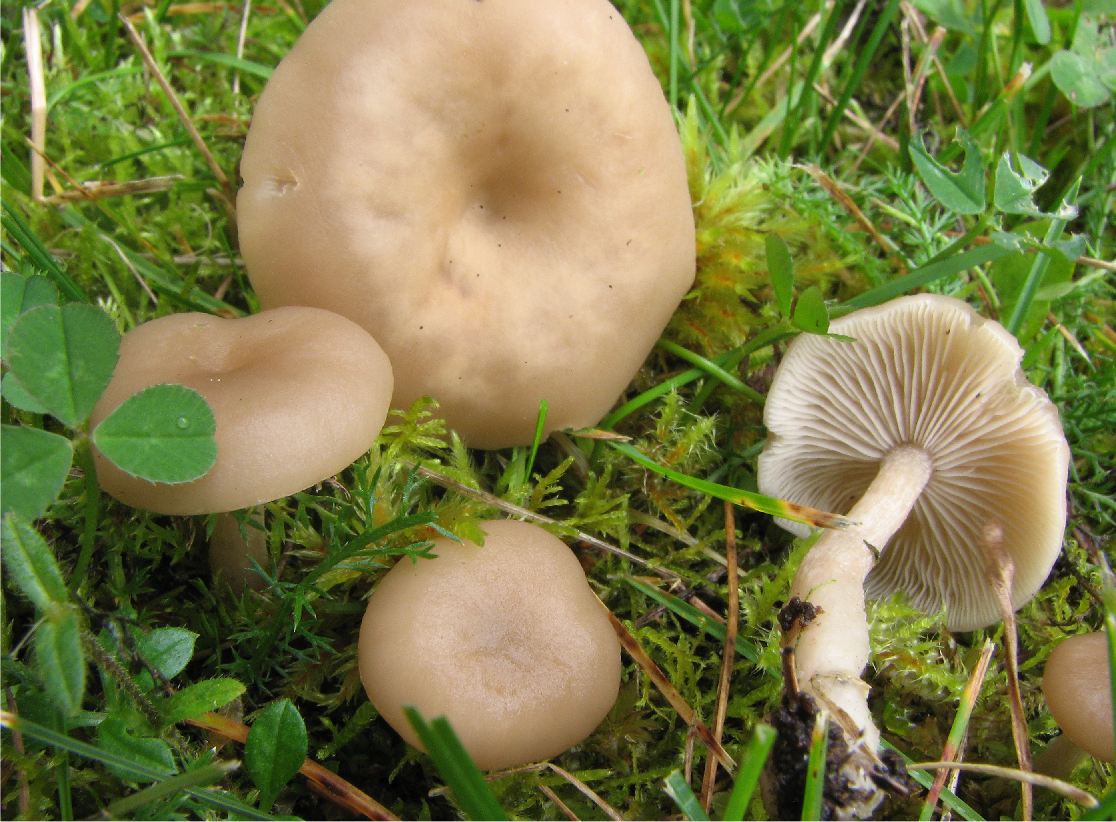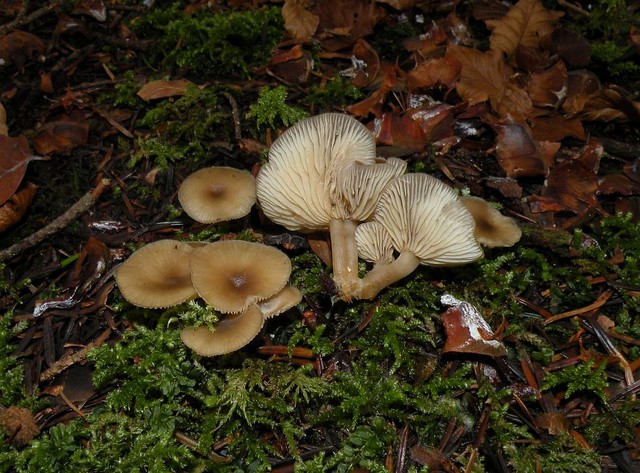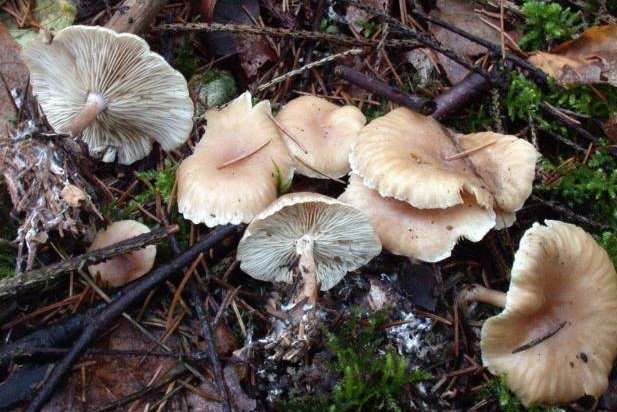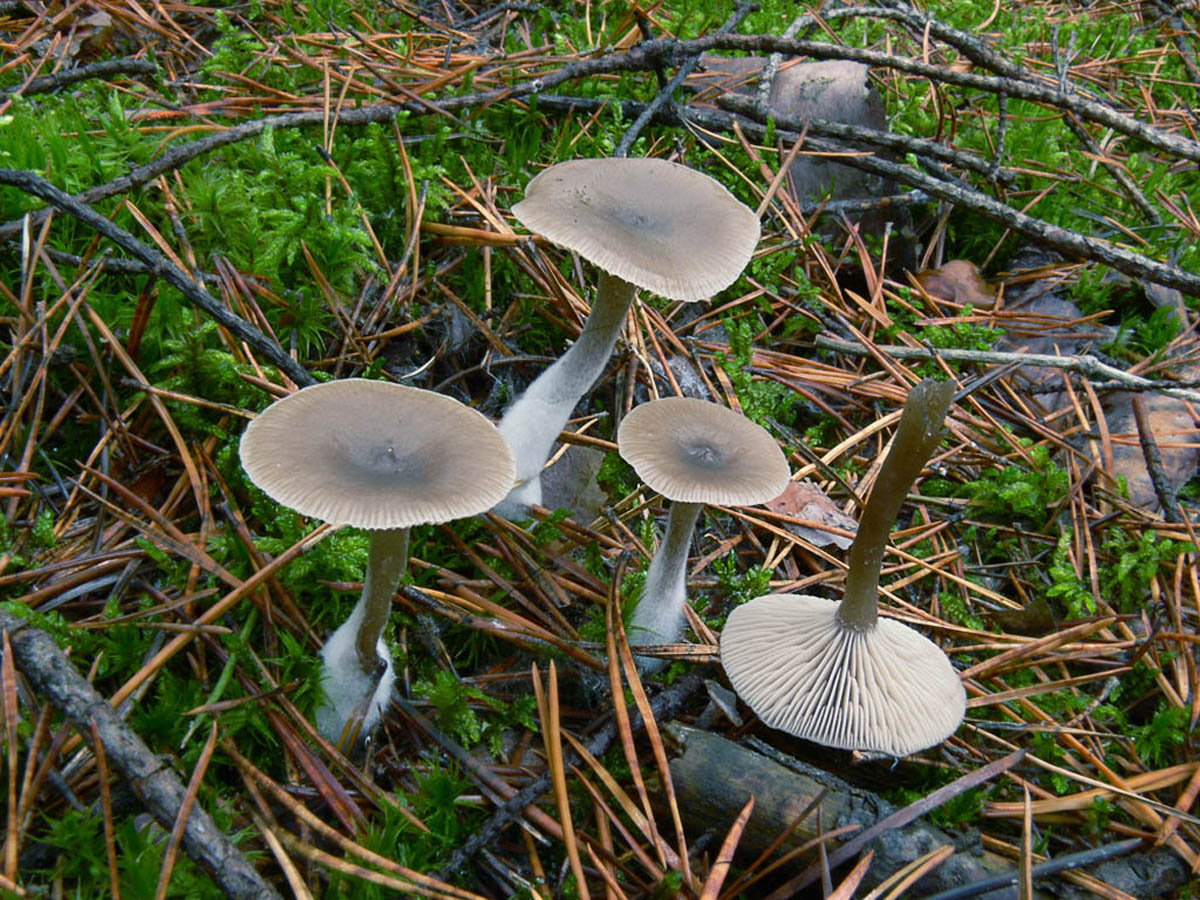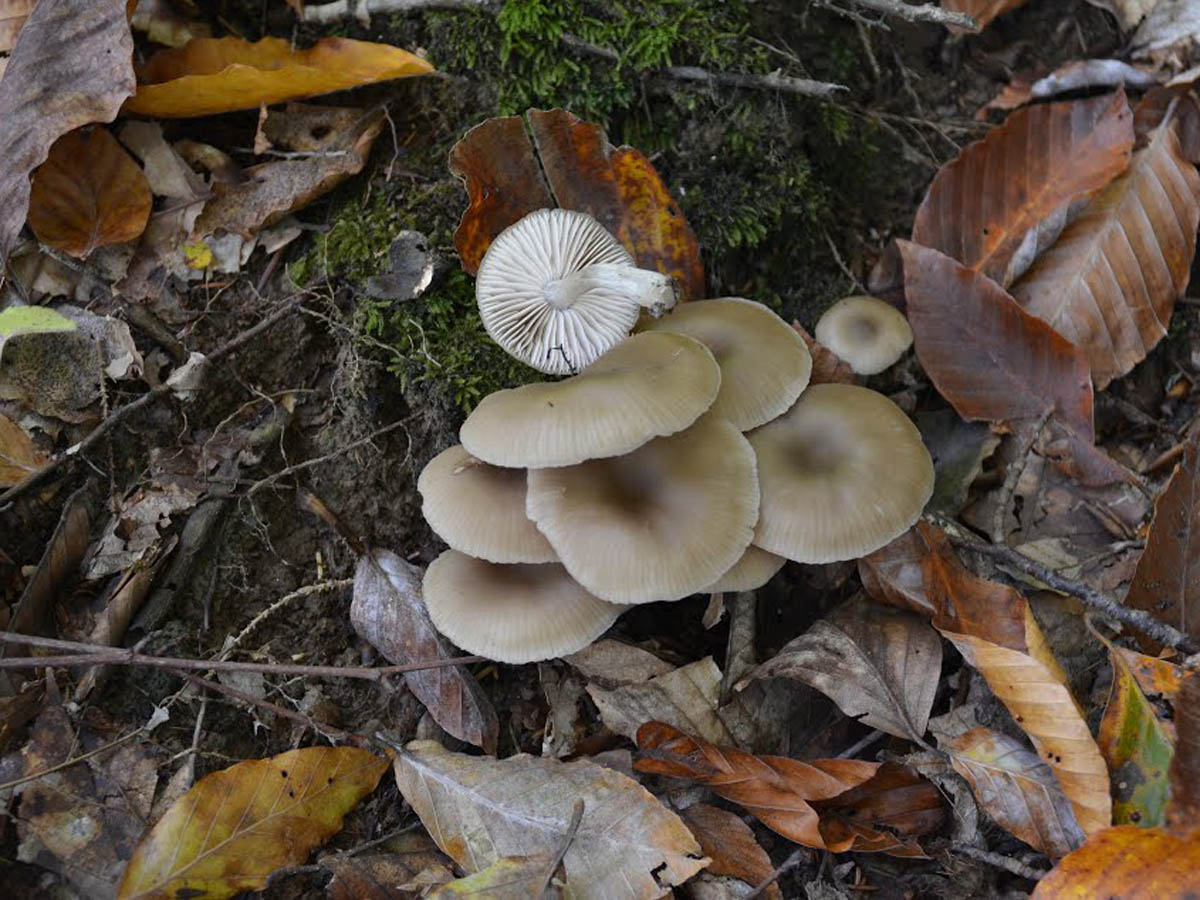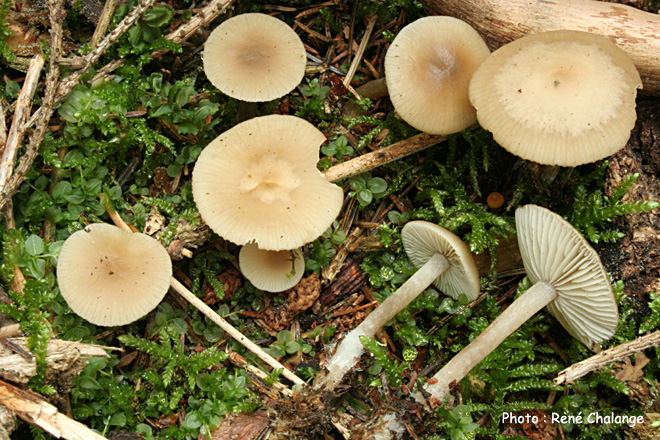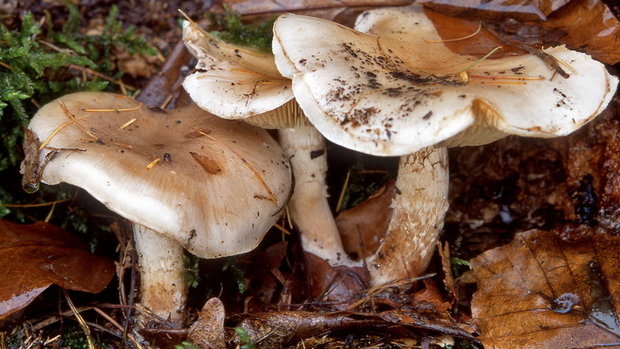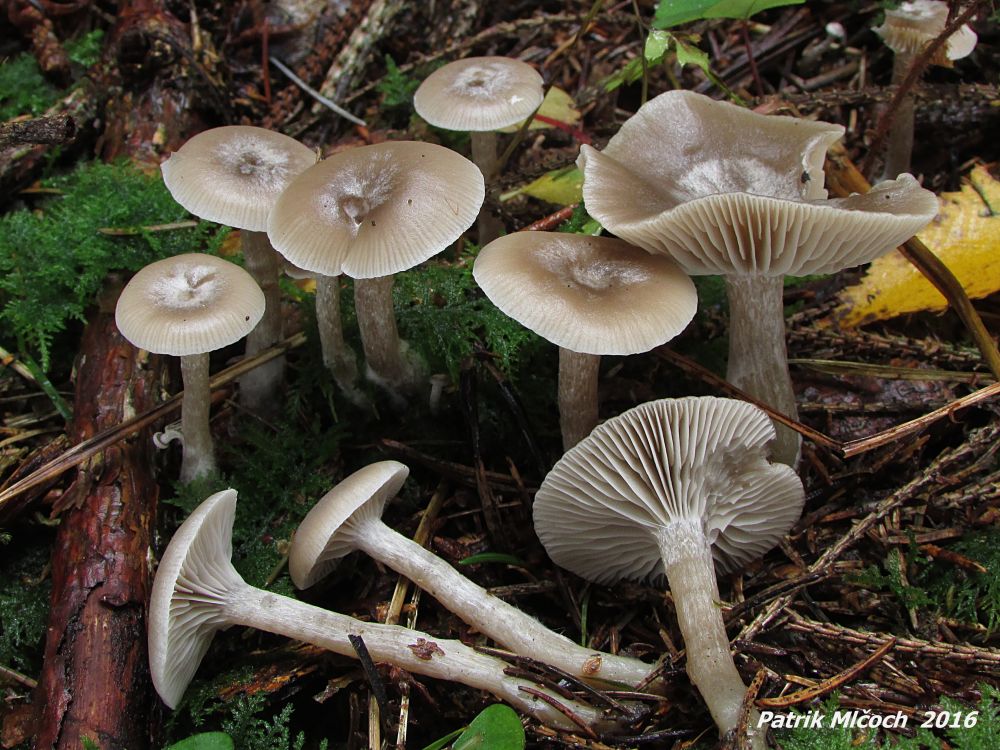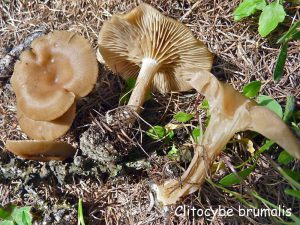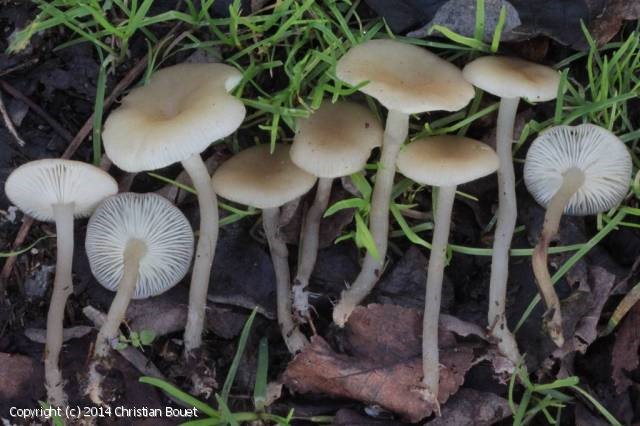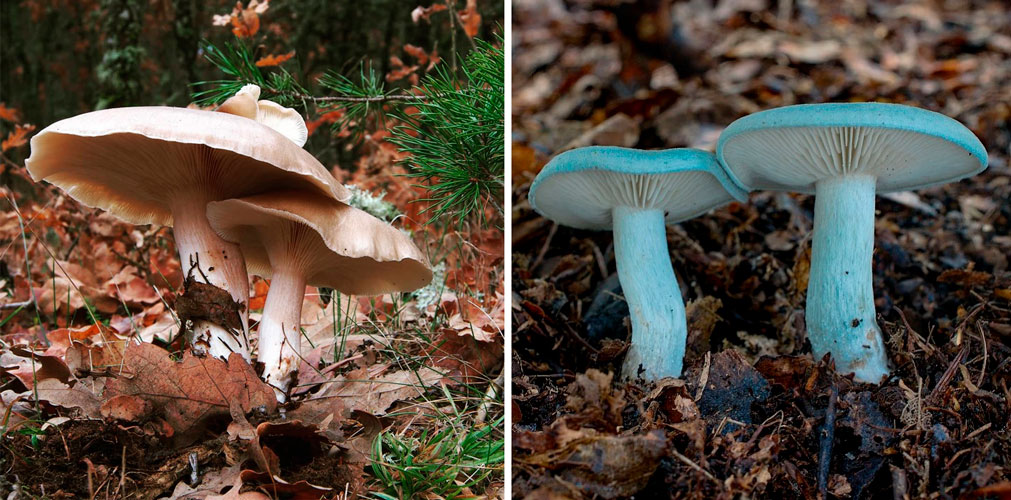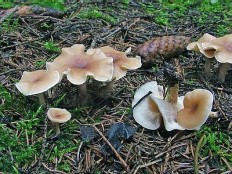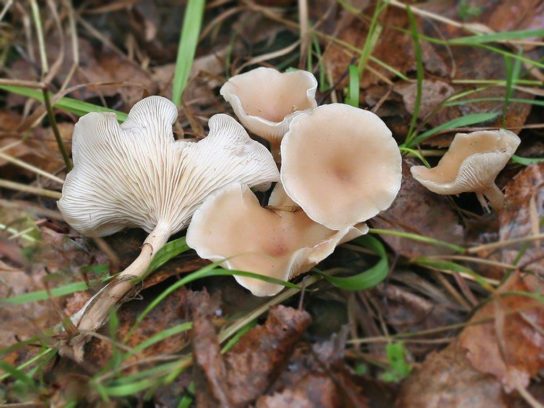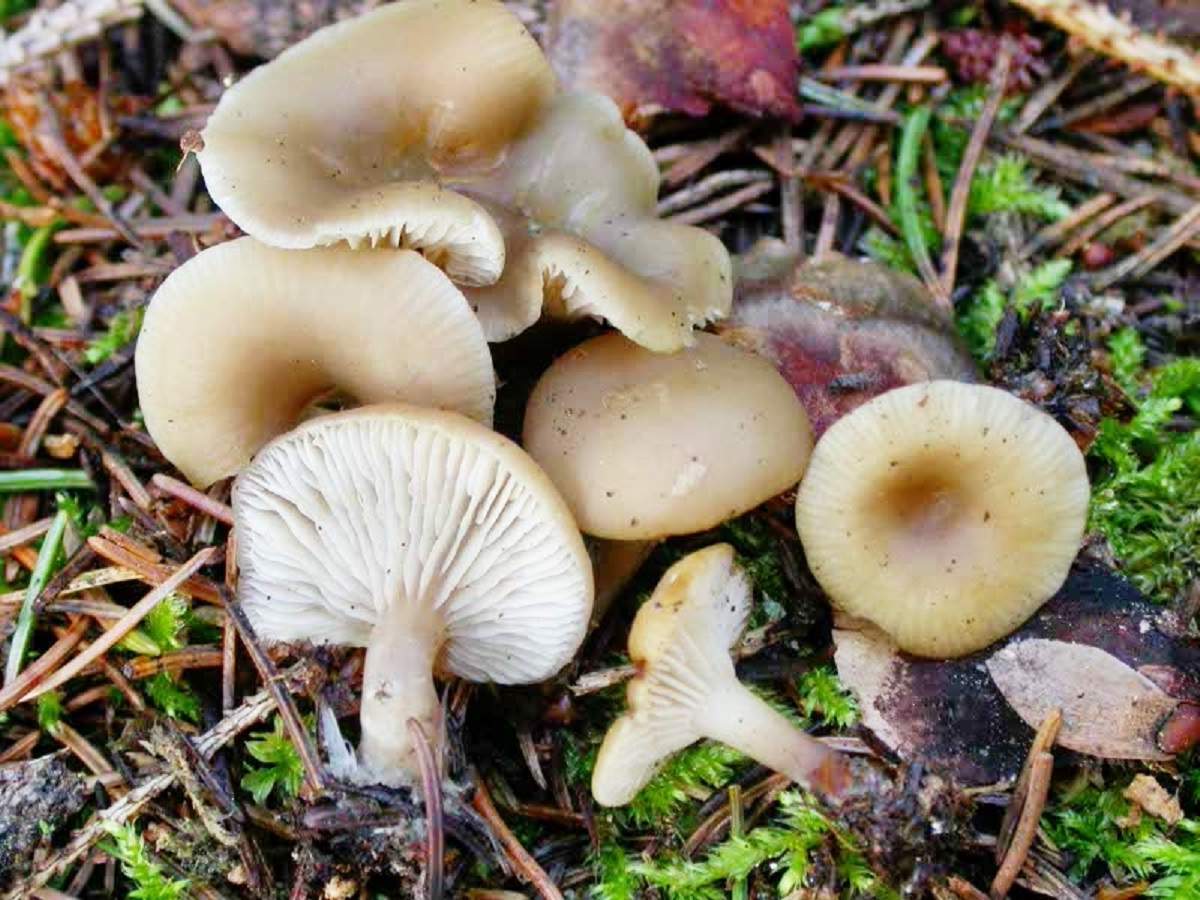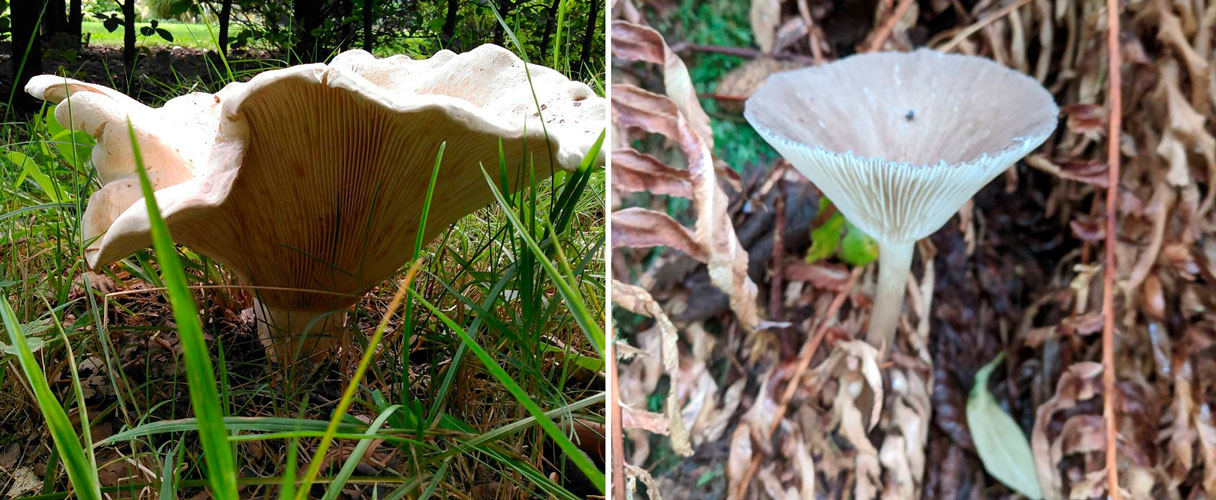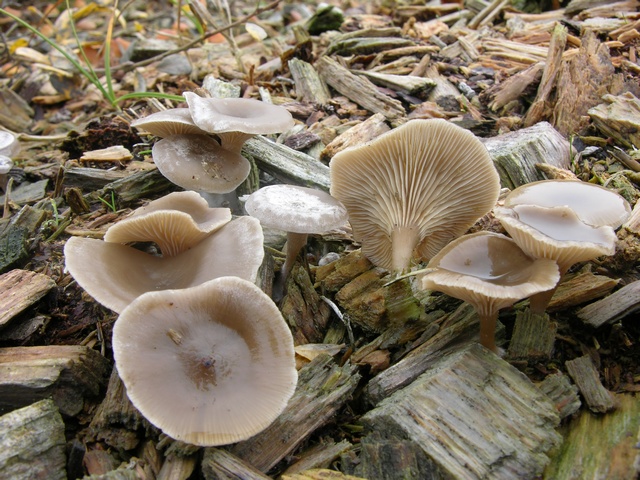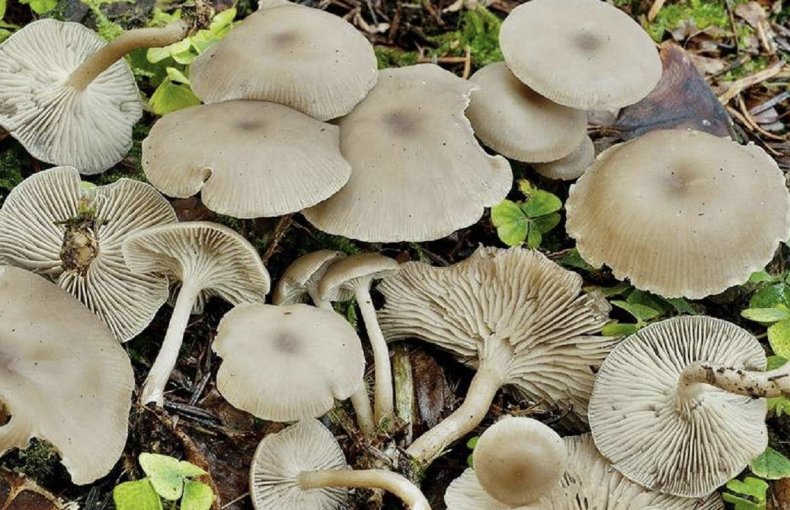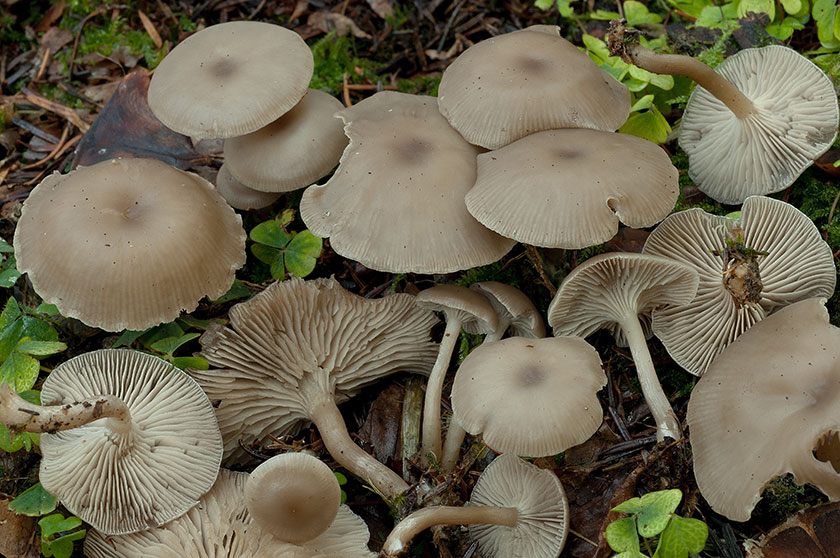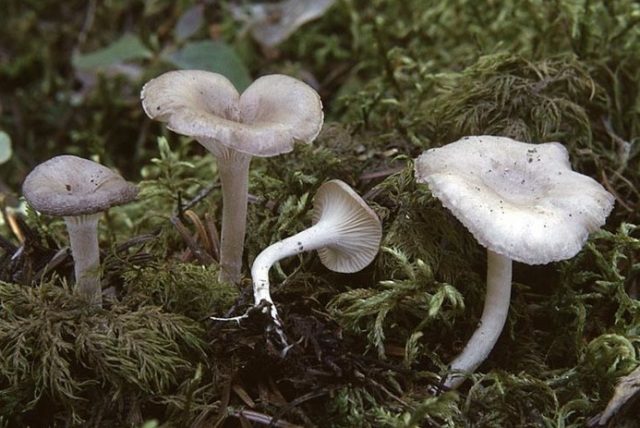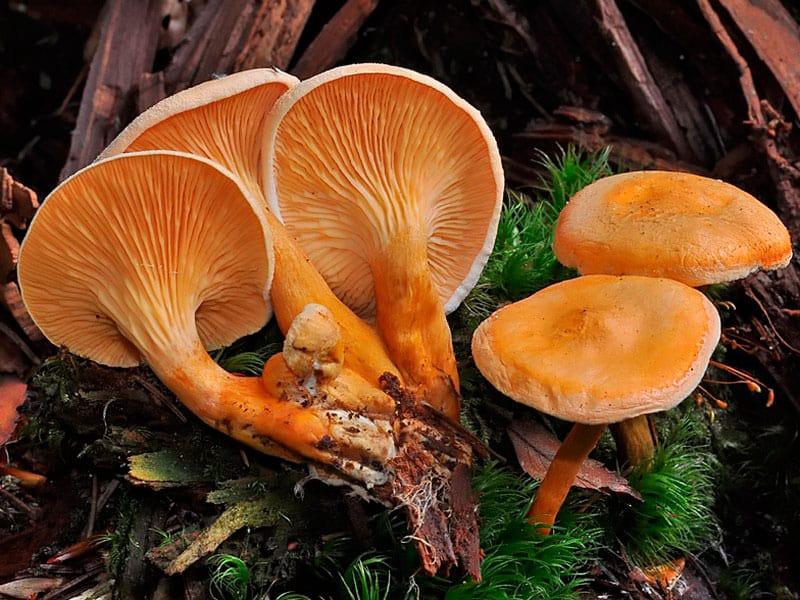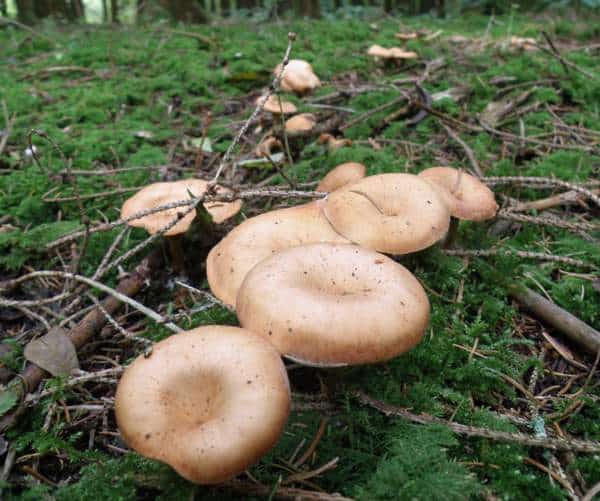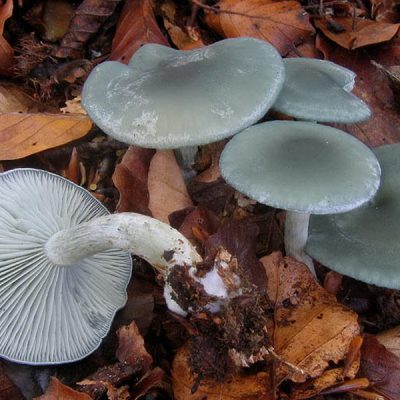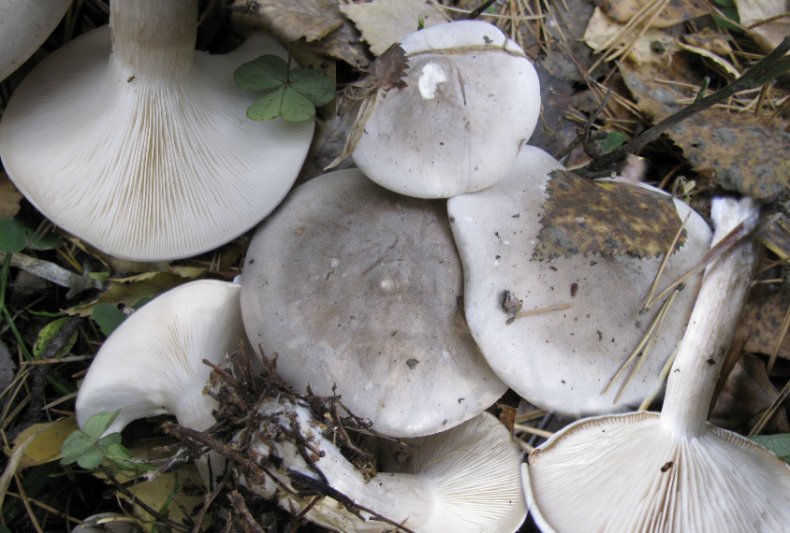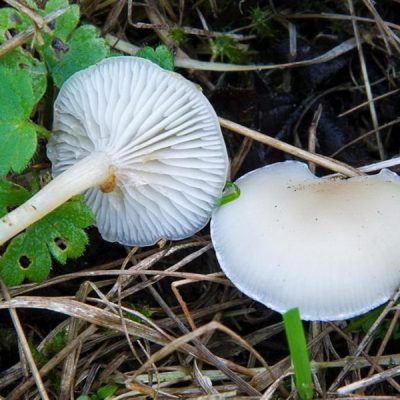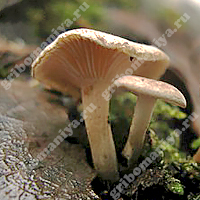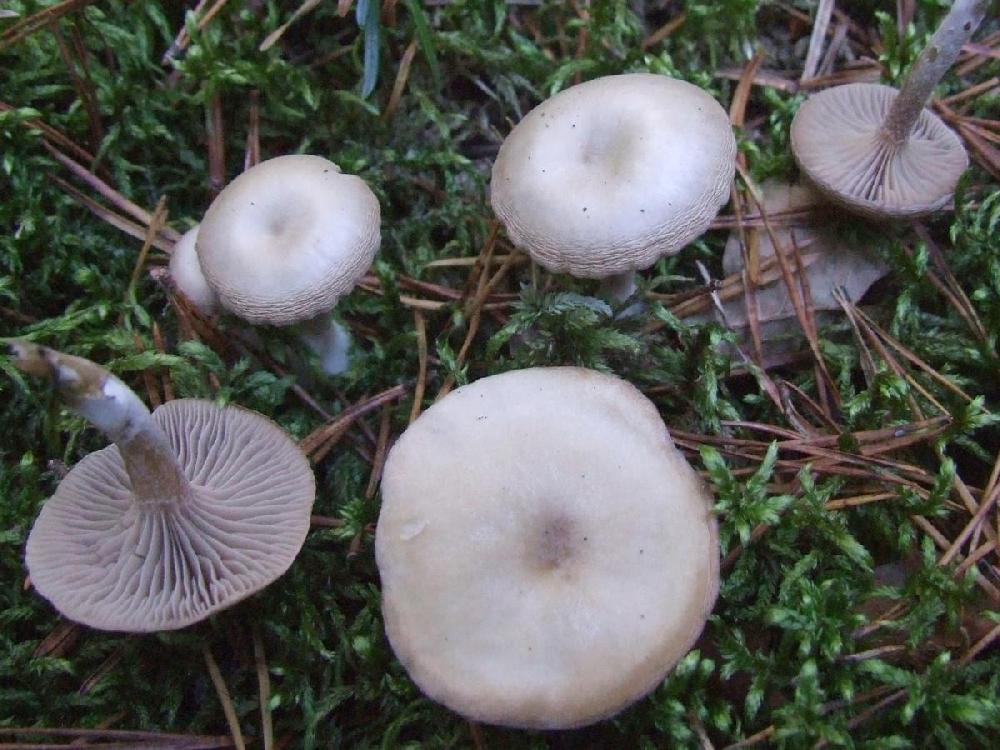Growing talkers at home
Talker is an unpretentious mushroom that forms mycorrhiza with any young trees. Sowing mycelium begins from late spring to early autumn. Three holes 20 cm deep and 10-15 cm in diameter are dug near the tree trunk. Half the holes are filled with soil for growing indoor plants. Then the mycelium of the talkers is evenly distributed over the wells. Put compost from the soil on top and tamp it tightly. A litter of leaves, moss, branches is laid on top. Wells are carefully watered.
The first crop is harvested a year later. Fruiting period is from 3 to 5 years. From under each tree, about 17 mushrooms are harvested per season.
They also grow a govorushka indoors, planting them in special boxes.
Edible and conditionally edible talker mushrooms
Edible mushrooms contain an optimal ratio of vegetable protein, vitamins, fiber and amino acids, which prevents the occurrence of various diseases. Also, these mushrooms are able to reduce plaque cholesterol in the blood.
Giant talker
The hat has a yellowish or creamy shade, sometimes up to 30 cm in diameter. The flesh is tasteless and smells like flour. It contains an antibiotic and clitobicins, so this species is considered conditionally edible. The antibiotic is capable of destroying tuberculosis infection, and clitobicin kills germs.
These mushrooms are often used in traditional medicine to treat airway problems and lower blood cholesterol. It is also often used as an antiseptic.
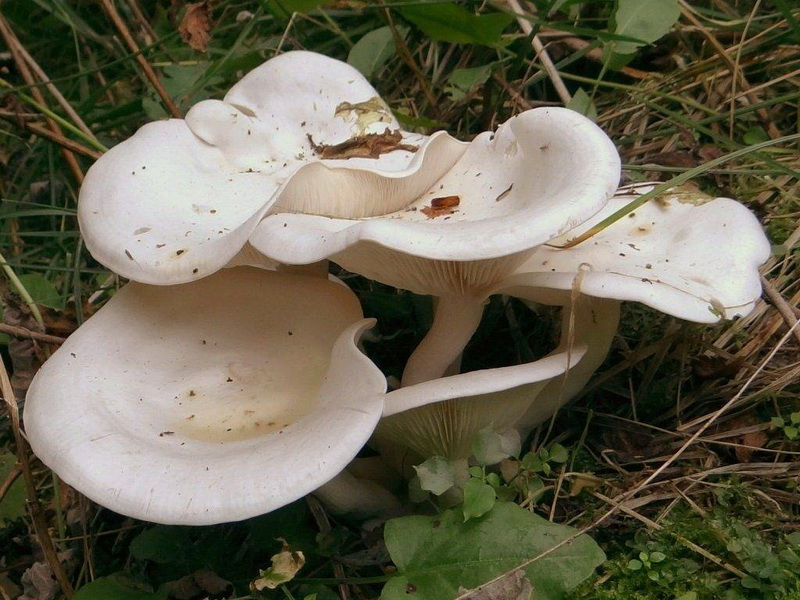
Anise talker
The gift of the forest is eaten only after boiling. After that, you can fry it, add it to pies or salt it. It is better to choose young mushrooms with fleshy pulp.
This type of talker can be distinguished due to its specific smell and color. Field champignon has a very similar smell, but its color is very difficult to confuse.
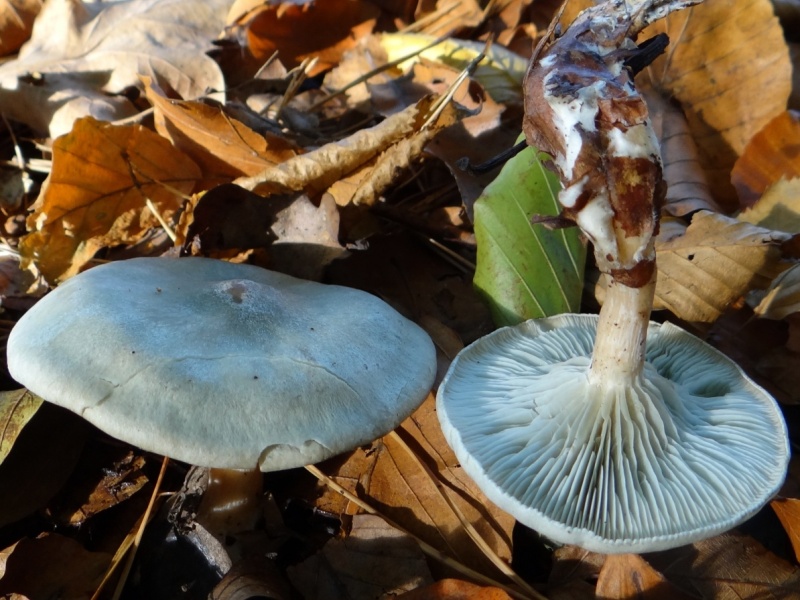
Smoky talker (Clitocybe nebularis)
Synonyms:
Smoky talker or smoky ryadovka (Latin Clitocybe nebularis) is a mushroom of the genus of talkers of the Ryadovkov family.
Hat:
Large, fleshy, 5-15 cm in diameter, hemispherical at first, prostrate with age, sometimes depressed. In youth, the edge of the cap is noticeably tucked; such "tucking" is often preserved in an extended form, making the appearance of the mushroom very characteristic. Color - ashy, sometimes with a yellowish tinge; the edges are lighter than the central area. The pulp is thick, white, becomes loose with age. The smell is very characteristic, fruity-floral (very noticeable during cooking).
Plates:
Initially white, then yellowish, frequent, slightly descending.
Spore powder:
Whitish.
Leg:
Thick, widening towards the base, often clavate, fleshy, full with age, light. Height 4-8 cm, thickness 1-3 cm.
Spreading:
Smoky govorushka grows from late summer to late autumn (especially abundantly from mid-September to early October, or even later) in spruce and mixed forests (apparently preferring to form mycorrhiza with spruce), as well as on the edges, in gardens, etc. It often appears in very large groups, forming rings and rows.
Similar species:
Many ryadovki and entolomes look like a smoky gossip, which, however, can be unmistakably identified by its characteristic “flower” smell. If the smell is not so pronounced (which depends on the growing conditions), a distinctive feature of Clitocybe nebularis can be considered a certain “cottoniness” of the pulp in adult mushrooms, which is not characteristic of either rowers or enthol. Of course, these signs are extremely inaccurate, but having met once with a smoky row, it is easy to learn to distinguish it from all other mushrooms without any signs. Intuitive.On the other hand, not knowing the mushroom well, you can confuse it with the Clitocybe clavipes. The smell will put everything in its place.
Edibility:
Smoky ryadovka - Good edible mushroom, according to some sources - conditionally edible (in order to avoid misunderstandings, it is better to boil the mushroom, do not use the broth in food). Surprisingly, it boils down a lot - perhaps a champion in boiling down. Some sources, including Vishnevsky, talk about the toxicity of this mushroom, arguing it with some kind of heresy (allegedly, "causes shortness of breath and sweating"). I don't think you should take this seriously. Another thing is that the peculiar taste and especially the smell of the smoky row is not to everyone's liking.
Video about the mushroom Smoky Talker:
Notes: Smoky Talker is a mushroom capable of falling in love with itself at first sight. Large, plump fruiting bodies; noble rough hats; solid legs-tubers. And the scale! ..
This mushroom can surprise. The pan was loaded with a huge slide, ten minutes - and the mushrooms were barely on the bottom. So boiled down. Or did they all smell? The famous "floral aroma" is most pronounced during cooking - especially if smoky talkers are boiled separately from other mushrooms, by themselves. Can you imagine our amazement when the whole hut was suddenly filled with the scent of rose oil? They did not immediately think about mushrooms - no one warned us that it should be like this.
And what big worms there are in these talkers! .. I confess honestly: I have never seen such healthy worms before. That is, of course, separately - wherever it went, but as a system, when the cap of each overripe mushroom is stuffed with huge worms ... no, it was a big surprise.
Clitocybe nebularis is an interesting mushroom with a difficult character. Earlier, for some reason, I ignored both ryadovki and talkers, considering them European spineless, "universal" mushrooms. Only now the whole depth of this delusion begins to reach me ...
Similar species and how to distinguish from them
The only "twin" of orange talkers are edible chanterelles. These mushrooms are very similar: only experienced mushroom pickers can distinguish false chanterelles at a glance.
False and real chanterelles differ, first of all, in color. In a kokoshka, it is bright and rich, with a clear orange, orange-red tint. In an edible mushroom, it is more moderate: yellow-orange or light yellow, white-yellow, without red and red tones.
The surface of the cap in the edible mushroom is smooth, in the false one it is velvety. You can identify a false chanterelle and around the edges of the cap: neatly rounded, even, smooth. In a real mushroom, they are wavy, torn, irregular in shape; the hat itself is large. The plates of the false double go down on the leg, and for the present, they pass into it.
Gives out an orange talker and a leg: thinner than that of a real one, and dark at the base. Chanterelle legs are thicker, do not bend, taper downward, are equally colored along the entire length. False chanterelles can be distinguished by their pulp: it is yellowish, loose, and does not change color when pressed. The flesh of a real chanterelle is white in the middle and yellowish at the edges, and turns red when pressed. Has a pleasant mushroom smell and rarely becomes wormy.
True chanterelles always grow in groups, avoiding places clogged with rotting wood. But you can find both types and side by side
Therefore, it is important to know what false chanterelles look like. Once in the basket with edibles, they can lead to food poisoning.
Poisonous and inedible talker mushrooms
First of all, one must remember that among all the variety of talkers, there are poisonous and not suitable for the human body. Like other mushrooms, talkers absorb toxins and heavy metals. Do not collect them near industrial plants and roads.
Pale talker
An inedible mushroom, and some scientists consider it completely poisonous. The young mushroom has an almost flat cap. However, with age, it changes to the shape of a funnel with curved edges and many pits on the surface.The pulp is gray and watery. The leg of this species is distinguished by its edge and widens towards the base. This species is practically odorless; when dried, it gives off the smell of mustiness and rot.
Pale-colored talker grows from Primorsky Territory to the European part of Russia. Most of the mushrooms of this species grow in the fallen leaves of birch or oak, although they can also be found in mixed forests. You can distinguish a pale-colored govorushka by growth alone, unlike other representatives of the genus, which grow massively in groups.
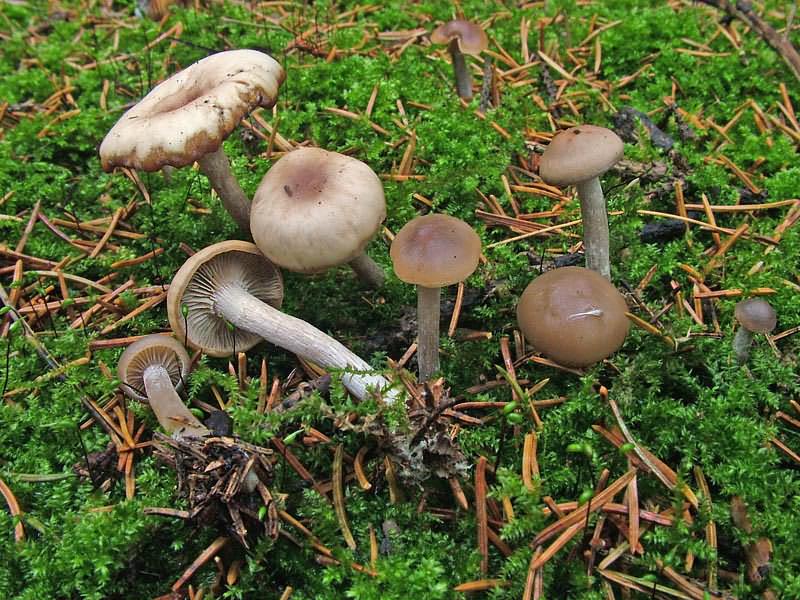
Cupped talker
This type of talker has several names: goblet talkers, translucent talkers or diatrette talkers. A hat in the form of a bowl or deep funnel with a diameter of up to 8 cm has a gray-brown color. In good dry weather, the surface of the cap is silky, and in damp weather it becomes hygrophilous. Harvest and harvest occurs in early August and lasts until early October.
They grow in coniferous and mixed forests. It is best to collect them on litter and decaying wood, mainly in groups. It is very rare to find single individuals.
 Cupped talker
Cupped talker
Waxy and giant talkers
Waxy talker is a rare poisonous lamellar mushroom. Grows singly or in small groups from late July to late September, preferring open, sunlit areas of mixed or coniferous forest with sandy soil or low dense grass.
In young mushrooms, the cap is convex, but in the process of growth it becomes slightly depressed or open, with wavy edges. There is a small tubercle in the center of the cap. The surface of the cap is smooth, matte, light gray in color, but in damp weather it darkens, and barely noticeable concentric zones appear on it. The spore-bearing layer is formed by descending cream-colored plates. The leg is rounded, even, wider at the base, solid inside. Its height is about 5 cm with a diameter of 1 cm. The surface of the leg of this poisonous talker is painted in an off-white color, its upper part is smooth, and the lower part has a slight pubescence. The pulp is thick, with an unpleasant odor, elastic in the leg, fragile in the cap.
The tissues of the waxy govorushka contain a poison that is dangerous to the human body, which can cause serious food poisoning.
Giant talker is a rare conditionally edible lamellar mushroom. It grows in large groups, forming the so-called witch circles, from late August to late October. Produces bountiful harvests annually. Prefers to settle in open areas of the forest, as well as in pastures.
The convex cap of the mushroom eventually becomes funnel-shaped, with thin, upward-curved edges. As a rule, the diameter of the cap of a mature mushroom does not exceed 13–15 cm, but there are also giants with caps up to 30 centimeters or more in diameter. It was they who gave the name to this type of mushroom. The surface of the cap is matte, silky to the touch; depending on the habitat, it can be covered with small scales. Most often it is snow-white, less often the color of coffee with milk. On the underside of the cap there are descending plates with bridges. Their color changes from beige to yellow as they grow. The leg is white, dense, up to 8-10 cm high and about 3-4 cm in diameter. The flesh is also white, fleshy, firm, with a faint powdery odor, in old mushrooms with a bitter taste.
The giant talker belongs to the fourth category of mushrooms. It is eaten only after preliminary boiling, after which you can prepare the first and second courses from it, as well as prepare it for future use - salt or pickle. The mushroom pulp contains a natural antibiotic - clitocybin A and B, which has a detrimental effect on the tubercle bacillus.
How to distinguish false talkers from true ones
In the variety of types of talkers, it is very difficult to choose edible ones. However, a universal rule of difference has not yet been invented. The main rule is excellent knowledge of the characteristics and differences between the types of talkers.It is known that among the mushrooms in the wild, poisonous mushrooms are often found, visually practically indistinguishable from those suitable for human consumption. The main factors are smell and color. A mealy and pleasant smell is often attributed to poisonous mushrooms.
Some types of talkers are distinguished by pink plates and spores, as well as the absence of circles on the cap, like in edible mushrooms. Only experienced mushroom pickers can distinguish edible, conditionally edible from poisonous and inedible
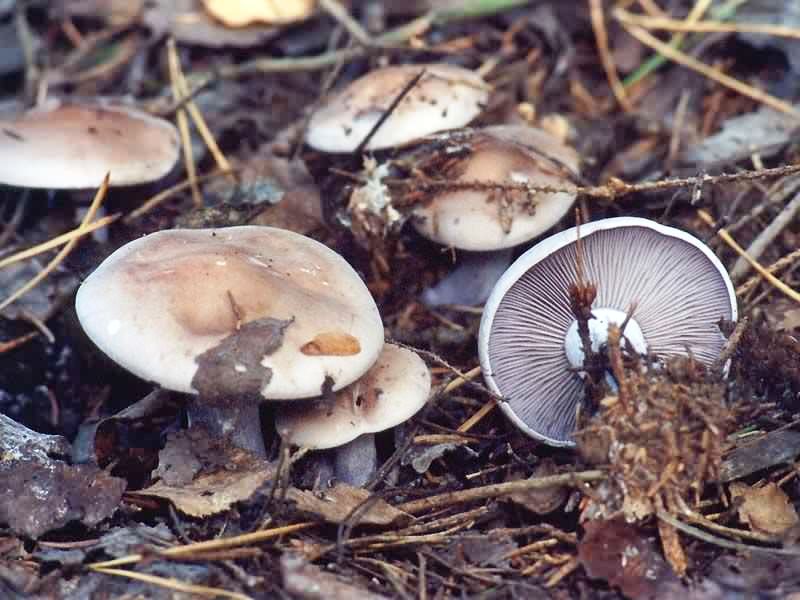
Methods for making talkers
In cooking, only hats are used, the legs have no taste. Young mushrooms have a delicate fruity aroma that is lost with age. Talkers can be added to all traditional dishes boiled, fried, pickled and dried. The aroma is perfectly revealed in the first courses and sauces. The specific enzyme of mushrooms in its raw form gives the dishes a not very pleasant bitter taste.
It is not recommended to use talkers with alcohol. The wide area of growth of govorushki favors their presence in various dishes of different nations.
Talker Salad
Dice boiled potatoes, beets, and carrots. Cut fresh onions into half rings and add to vegetables. Then mix all the products with pickled mushrooms and canned peas. Salt to taste, add a couple of drops of lemon juice or unrefined sunflower oil.
Pickled salad
Mix crispy pickled cucumbers with coarsely chopped pickled talkers. Cool boiled potatoes and cut into cubes and add to the rest of the ingredients.
Despite the variety of types of talker, this mushroom has taken its rightful place at Russian feasts. The mushroom requires careful handling and heat treatment before eating.
Edible talker
The genus is represented by both edible and poisonous species, including deadly poisonous ones. Since it can be very difficult to distinguish between these species, it is recommended to collect talkers only for experienced mushroom pickers.
Edible talkers have many beneficial properties. They contain animal and vegetable protein, rich in fiber, vitamins, minerals. Mushrooms have a positive effect on the functioning of the digestive system, strengthen the immune system, and reduce the risk of developing many diseases, including tumor ones. In addition, talkers are a low-calorie product that is suitable for dietary nutrition.
The main food is the caps of young mushrooms. The legs are tasteless and mature mushrooms lose their unique flavor. Young talkers are fried, boiled, salted, stewed, pickled and dried. They give a delicate and delicate aroma to any dish, so these mushrooms are often added to soups and sauces.
Fresh talkers are not used, since because of the enzymes they contain, they have a bitter taste.
During heat treatment, talkers are very fried and boiled down, and lose about half of their mass.
Characteristic features of talkers
Talkers belong to the type of cap mushrooms and the family of ordinary ones. They also have some differences between themselves that need to be studied in order to distinguish edible varieties from inedible ones. There are also poisonous varieties in the genus, so only experienced mushroom pickers are recommended to collect this species.
Appearance and photos
All representatives have medium or small fruiting bodies. The average diameter of the cap is 3-7 cm. The cap is mainly of light shades, sometimes grayish, there is a small depression in the center - it has a funnel-shaped shape.
The hat is smooth and dry to the touch. The stem of the mushrooms is thin and high. On the back of the cap there are thin, white plates that go to the top of the stem. The spore powder of the fungus is light, sometimes creamy.
Place of distribution
You can meet talkers most often in deciduous forests. It is there that they form mycorrhiza with trees. Organisms grow in groups, which are often called the witch's circle.This phenomenon is accompanied by the growth of a large number of mushrooms in a circle, with an empty space in the center.
In addition to forests, this species can also be found in grassy areas, for example, in meadows or in parks. On the territory of Russia, mushrooms are common in temperate climates, and can also be found in the forests of Siberia and in the Primorsky Territory.
Collection rules
Experienced mushroom pickers recommend collecting talkers from mid-August to October. Their peak yields are in mid-September. Many varieties of talkers grow in groups, making harvesting much easier.
The place of collection of talkers depends on the characteristics of the variety, however, most of them grow in forests near trees, where a large number of fallen leaves or moss prevail.
First aid for poisoning
An inverted talker is capable of causing severe poisoning due to the content of a complex of toxic substances. If you find the accidental use of this mushroom, you must call an ambulance.

Before the arrival of a team of specialists, it is first of all important to eliminate the influence of toxins and prevent dehydration after vomiting and diarrhea. To this end, the necessary measures will be:
- the use of liquid in order to prevent dehydration (preparation of a saline solution at the rate of 1 tsp per 1 tbsp. of water or the use of pharmaceuticals: Regidron and analogues);
- the use of enterosorbents for the removal of harmful substances (Enterosgel, a solution from a suspension of Polysorb, activated carbon);
- with an increase in temperature - taking antipyretic drugs (Paracetomol, Ibuprofen);
- the victim should be in bed, he needs to put warm heating pads on his legs and stomach.
In some cases, diarrhea and vomiting may be absent, which makes it difficult to diagnose poisoning and entails serious consequences, since toxins do not leave the body. First aid includes the induction of vomiting artificially. To do this, drink 1.5 liters of potassium permanganate solution, then press on the root of the tongue.
Description of the winter talker
The diameter of the cap of this mushroom is small - up to 5 centimeters. At the initial stage of growth, the shape of the cap is convex, and later it becomes prostrate or depressed. The edges of the cap are thin, slightly curved. The color of the cap is brown-olive or smoky, when it dries it becomes white-brown.
The leg of a winter talker is cylindrical in shape, its height is about 4 centimeters, and its thickness does not exceed 0.6 centimeters. Stem with longitudinal fibers, hollow inside. The color of the leg, as a rule, coincides with the cap, and when it dries, it becomes lighter.
The plates are descending, narrow, grayish or yellow-white in color. The flesh of the winter talker is elastic and thin. The smell and taste of flour pulp. When dry, the pulp turns white. Spores are oval, wide, up to 6 centimeters long. Spore white powder.
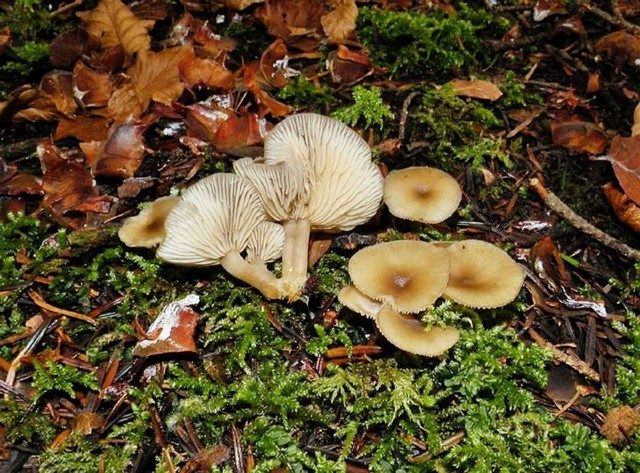
Growing places of winter talkers
These mushrooms grow in coniferous forests. You can find them on the litter. They ripen in late autumn. Winter talkers are common in the Caucasus, the Far East, Siberia, Western Europe, North Africa and South America.
Other mushrooms of this genus
A weak-smelling talker is an inedible representative of the family. The diameter of her cap reaches 6 centimeters. Young specimens have convex caps, but they quickly open and become funnel-shaped. The color of the fruit body is beige, gray-brown or brown. There is a waxy whitish or grayish coating. The length of the leg can reach 6 centimeters, with a diameter of 1 centimeter. Its shape is flattened or cylindrical. With age, the leg becomes hollow.
Weakly smelling talkers are found in small groups. These mushrooms grow in pine and mixed forests. They bear fruit from December to January.

Giant talker - conditionally edible mushroom. The diameter of the cap of this large mushroom reaches 10-30 centimeters. Its shape is weakly funnel-shaped. The color of the cap is white and fawn. Leg of the same color with a hat. The pulp is thick, without much taste, with a powdery aroma.
Giant talkers grow in the European part of our country and in the Caucasus.Sometimes they settle in numerous groups, forming "witch's rings". They can be eaten, but they can provoke an upset stomach. In terms of taste, giant talkers belong to the 4th category. They can be eaten only after 20 minutes of pre-boiling. It is recommended to use only young specimens.
The groove talker is an inedible mushroom. The diameter of its cap is 1.5 to 5 centimeters. The shape is convex, rounded, later becomes prostrate. The color of the cap is grayish-brown or gray-white. In dry weather, the surface of the cap wrinkles and becomes creamy. The leg is flat and curved, its shape is cylindrical. With age, it becomes hollow. The color of the leg is grayish, and below there is a whitish powdery coating.
Groove talkers are rare. As a rule, they grow in pine forests, sometimes they are found in deciduous forests. Fruiting in groups. You can find them on pine and spruce bedding. They prefer acidic soils.
General characteristics and description of the genus
Popularly, these cap mushrooms are known under the names govorushka, or ryadovka. In Russia, mushrooms are called talkers because of their heap growth: next to one representative of this species, there will definitely be a dozen more of its relatives of different sizes, as if this whole crowd was going to talk with each other.
Scientific classification of talkers:
- genus - Clitocybe;
- belong to the department of basidiomycetes;
- class belonging to agaricomycetes;
- ordinal name - agaric;
- belonging to the family of ordinary.
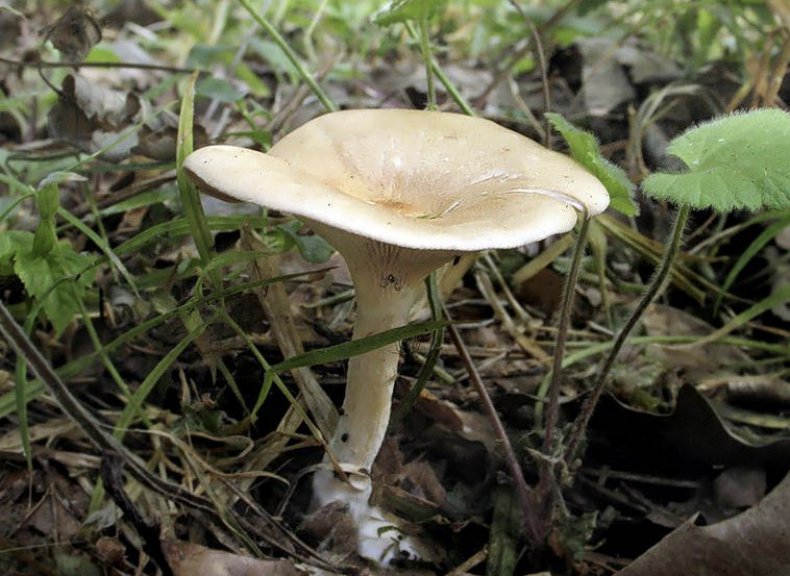
Fruiting body
Rarely, when the fruiting body reaches a large size, medium and small ones are more common, with hats no more than five centimeters. While the mushroom is young, the white fruiting body is elastic. In old mushrooms, it grows, loses its elasticity and becomes crumbly.
The leg is not thick, in the form of a cylinder, its height depends on the type of rows and their age. The usual leg length is from 3 to 8 cm, its thickness varies from 5 mm to 2-3 cm. A near-soil thickening of the mushroom leg is often found.
The plates in the rows have a light color of various shades, they are connected to the leg obliquely, downward. 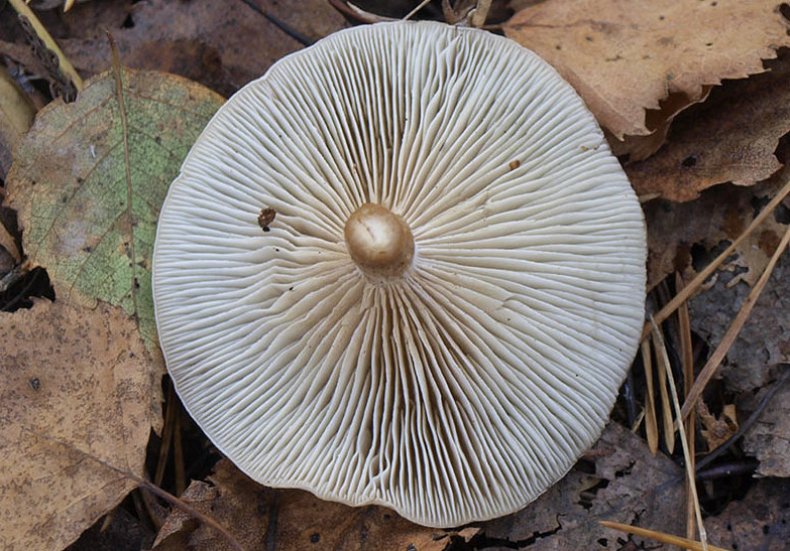 Aniseed talker plates
Aniseed talker plates


